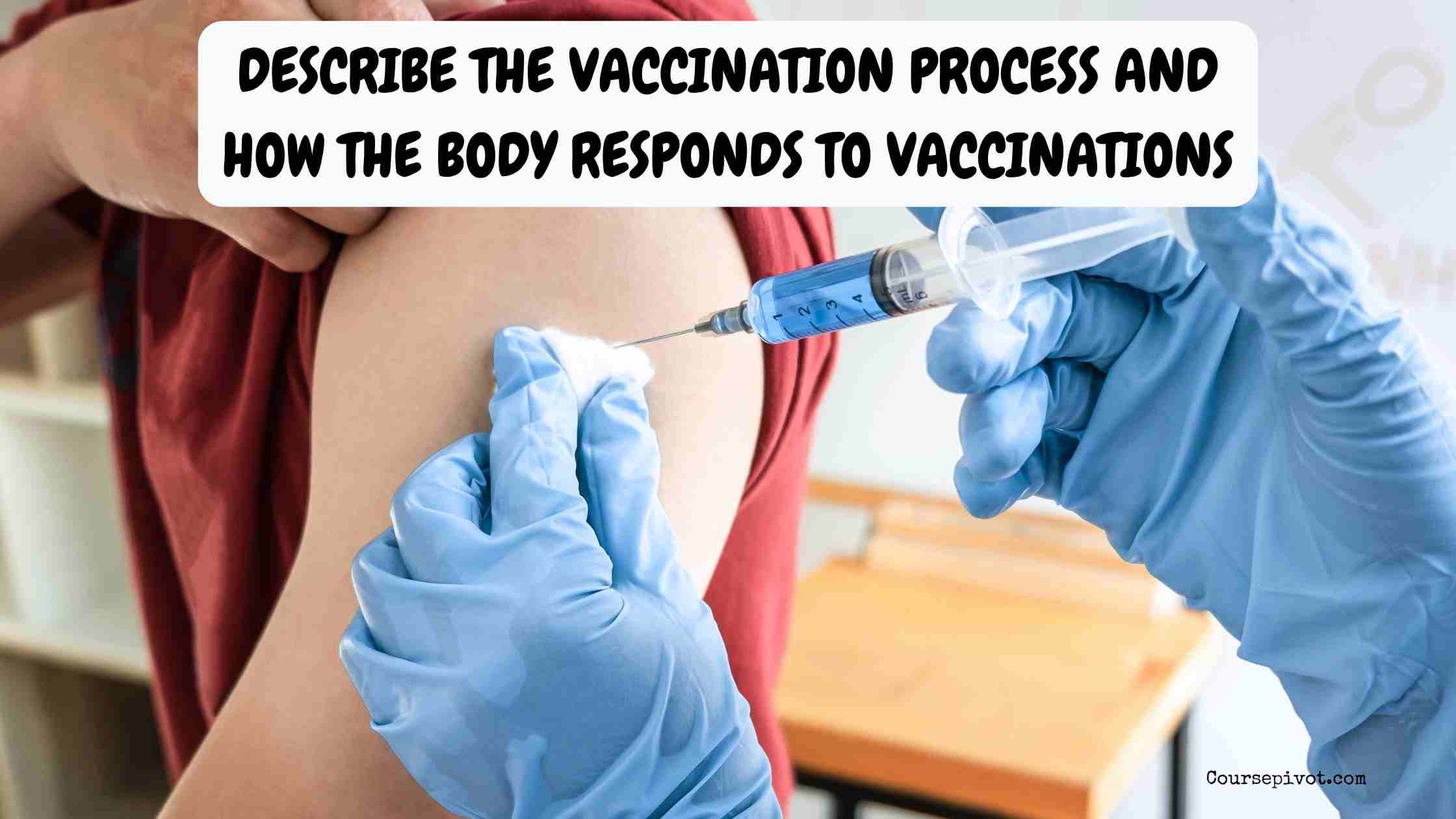
The Vaccination Process and How the Body Responds to Vaccinations
Vaccinations are a cornerstone of modern medicine, protecting us from diseases that once claimed countless lives. As someone who’s fascinated by how our bodies work, I find the vaccination process remarkable—it’s like training your immune system to become a superhero. But how exactly does it work? What happens in your body after a vaccine? This article dives into the vaccination process and the body’s response, breaking it down with clarity and detail. My goal is to provide a comprehensive, trustworthy guide that answers your questions and highlights the science behind vaccines.
Table of Contents
Why do vaccines matter? They prepare our bodies to fight infections without making us sick. Understanding the vaccination process and the body’s response can empower us to appreciate this medical marvel. Ready to explore? Let’s unpack the steps and science behind vaccinations.
What makes vaccines so effective? They harness our immune system’s natural abilities, turning it into a well-trained defense force. From the moment the vaccine enters your body to the long-term protection it provides, the process is a testament to human ingenuity and biological brilliance. Here’s how it all works.
What Is the Vaccination Process?
The vaccination process involves introducing a harmless form of a pathogen into the body to stimulate an immune response. This prepares the immune system to recognize and fight the real pathogen if encountered later. Let’s break down the steps.
Step 1: Vaccine Development
Scientists create vaccines to mimic disease-causing organisms without causing illness. Vaccines can contain:
- Weakened (live attenuated) pathogens, like the measles vaccine.
- Inactivated (killed) pathogens, such as the polio vaccine.
- Protein fragments or toxins, like those in the tetanus vaccine.
- mRNA, as in some COVID-19 vaccines, which instructs cells to produce a harmless piece of the virus.
These components are rigorously tested for safety and efficacy before approval. The process ensures the vaccine triggers immunity without harm.
Step 2: Administration
Vaccines are typically administered via:
- Injection: Most common, delivering the vaccine into muscle or under the skin.
- Oral drops: Used for vaccines like the oral polio vaccine.
- Nasal spray: For some flu vaccines.
The method depends on the vaccine’s design and target disease. Have you ever wondered why shots are the go-to? Injections ensure precise delivery to immune cells.
Step 3: Storage and Handling
Vaccines require careful storage to remain effective. For example, some, like the Pfizer-BioNTech COVID-19 vaccine, need ultra-cold temperatures. Healthcare providers follow strict protocols to maintain vaccine potency, ensuring the vaccination process delivers maximum protection.
Step 4: Booster Shots
Some vaccines require multiple doses or boosters to maintain immunity. For instance, the tetanus vaccine needs boosters every 10 years. Boosters reinforce the immune system’s memory, keeping it ready to respond.
- Read our blog on How Advances in DNA Technology Are Assisting the Medical Field
How the Body Responds to Vaccinations
Once a vaccine enters the body, it kicks the immune system into gear. The response is a carefully orchestrated process that builds protection against future infections. Here’s how it unfolds.
Initial Encounter: Antigen Recognition
Vaccines contain antigens, which are molecules from the pathogen that the immune system recognizes. When injected, these antigens alert the immune system, mimicking an infection. Dendritic cells and other immune cells detect these antigens and present them to T-cells and B-cells, the immune system’s key players.
This recognition is the first step in the body’s response. It’s like sounding an alarm, signaling the immune system to prepare for battle.
Innate Immune Response
The body’s innate immune system responds first. This is a rapid, non-specific defense involving:
- Inflammation: The injection site may become red or sore as immune cells rush in.
- Phagocytes: Cells like macrophages engulf and destroy the vaccine’s antigens.
This initial response is why you might feel mild side effects, like soreness or a low-grade fever. These are signs your immune system is working, not cause for alarm.
Adaptive Immune Response
The adaptive immune system takes over, creating a targeted, long-lasting defense. This involves:
- B-cells: These produce antibodies, proteins that bind to the pathogen’s antigens, neutralizing it or marking it for destruction.
- T-cells: Helper T-cells coordinate the immune response, while killer T-cells destroy infected cells.
- Memory cells: Both B-cells and T-cells form memory cells that “remember” the pathogen, ensuring a faster response if exposed later.
This adaptive response is the heart of how vaccines work. It’s why you’re protected long after the shot.
Building Immunity
Over days to weeks, the immune system strengthens its defenses. Antibodies increase, and memory cells are stored, ready to act if the real pathogen appears. This process, called immunological memory, is what makes vaccines so powerful. For example, the measles vaccine provides lifelong immunity in most cases.
Read our blog on Explain the Difference Between Essential Body Fat and Storage Body Fat
Why don’t we get sick from vaccines? The antigens are harmless, but they’re enough to train the immune system without causing disease.
Side Effects: A Normal Response
The body’s response to vaccinations can cause mild side effects, such as:
- Soreness at the injection site.
- Low-grade fever or fatigue.
- Muscle aches.
These are signs the immune system is active, not that the vaccine is harmful. Severe reactions are rare, thanks to rigorous testing. If you’ve ever felt achy after a flu shot, that’s your body practicing its defense moves.
Long-Term Protection
The body’s response to vaccinations provides long-term, sometimes lifelong, protection. Memory cells ensure a rapid, effective response if the pathogen is encountered. For example:
- The HPV vaccine protects against certain cancers for decades.
- The hepatitis B vaccine offers lifelong immunity in most people.
However, some vaccines, like the flu shot, require annual updates due to the virus’s mutations. This adaptability keeps vaccines relevant.
Factors Affecting the Body’s Response
Not everyone responds to vaccinations the same way. Factors include:
- Age: Infants and older adults may have weaker immune responses.
- Health conditions: Immunocompromised individuals may need special vaccine schedules.
- Vaccine type: Live vaccines often produce stronger immunity than inactivated ones.
Ever wondered why some people need boosters sooner? It’s because immune responses vary, but vaccines are designed to maximize protection for all.
Why Vaccinations Matter
Vaccinations don’t just protect individuals—they create herd immunity. When enough people are vaccinated, diseases struggle to spread, protecting vulnerable populations. The eradication of smallpox is a testament to this. By understanding how the body responds to vaccinations, we see why they’re a public health triumph.
What’s the takeaway? Vaccines train your immune system to act like a seasoned warrior, ready to fend off invaders without a full-scale battle.
Finally
The vaccination process and the body’s response to vaccinations are a marvel of science and biology. From the careful design of vaccines to their administration, every step is crafted to stimulate a robust immune response. The body’s reaction—starting with antigen recognition, moving through innate and adaptive responses, and culminating in long-term immunity—shows how vaccines prepare us to fight diseases safely. I’m amazed at how our immune system learns and adapts, turning a simple shot into lifelong protection.
Why should we care? Because vaccinations save lives by harnessing our body’s natural defenses. They’re not just about individual health but about protecting communities. As I reflect on this process, I’m reminded of the incredible balance between human innovation and biological resilience.
What’s your key takeaway? For me, it’s the power of immunological memory—our body’s ability to “remember” and fight pathogens years later. By getting vaccinated, we equip ourselves and our communities to thrive. Let’s embrace this science, trusting in its ability to keep us safe.
Cite this article
You can copy and paste your preferred citation format below.
Martin, L. & Arquette, E.. (2025, May 28). The Vaccination Process and How the Body Responds to Vaccinations. Coursepivot.com. https://coursepivot.com/blog/describe-the-vaccination-process-and-how-the-body-responds-to-vaccinations/



